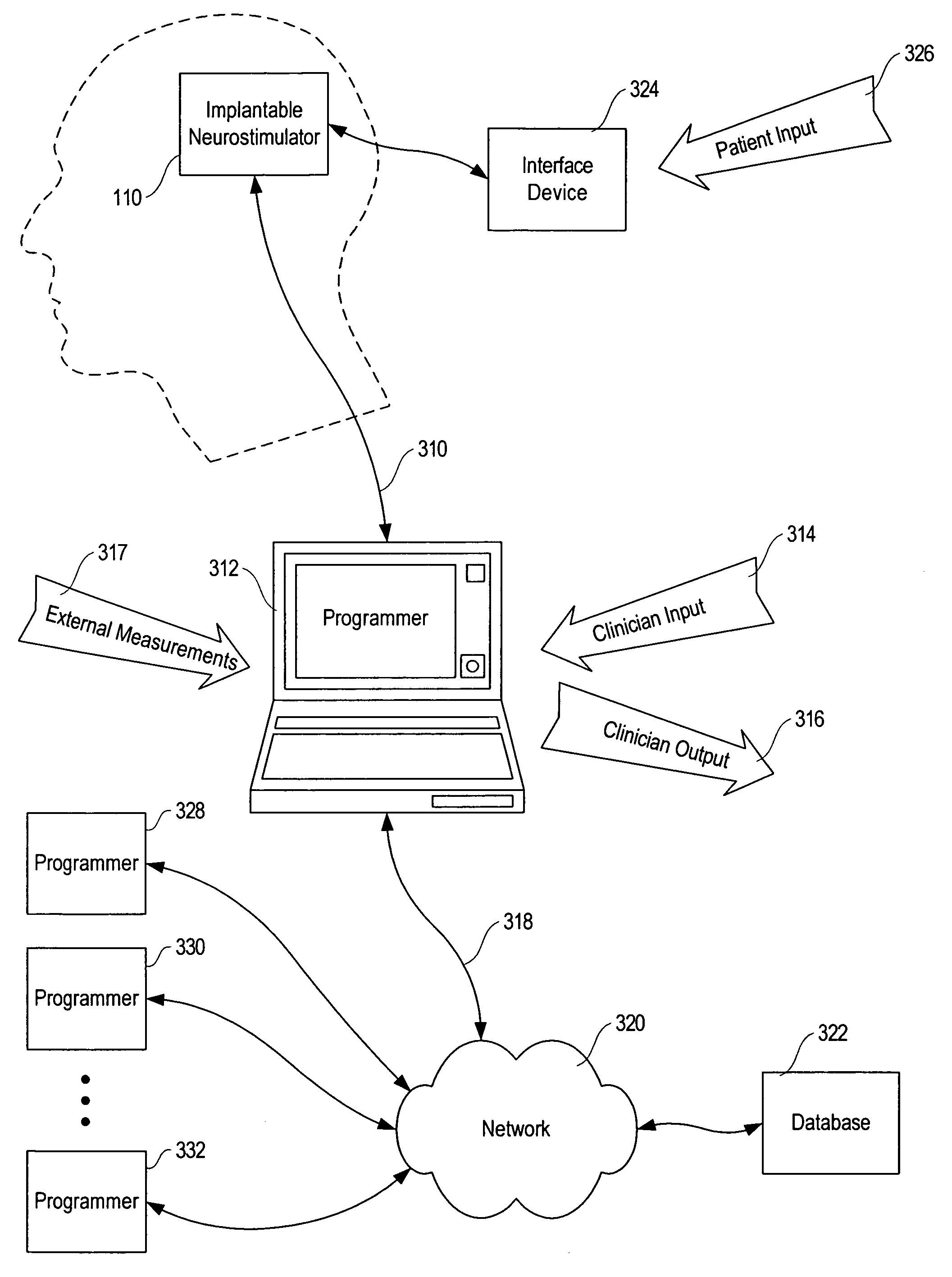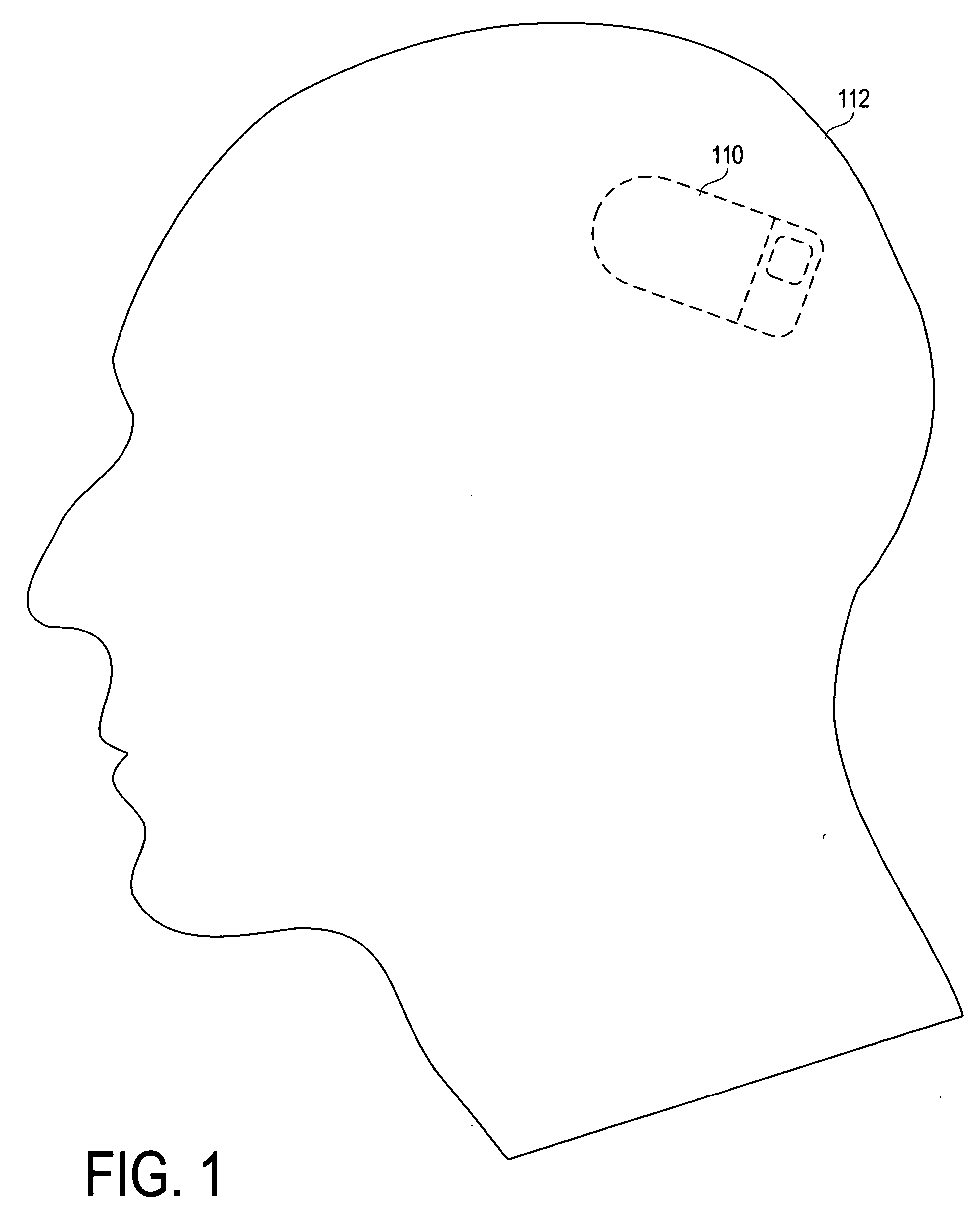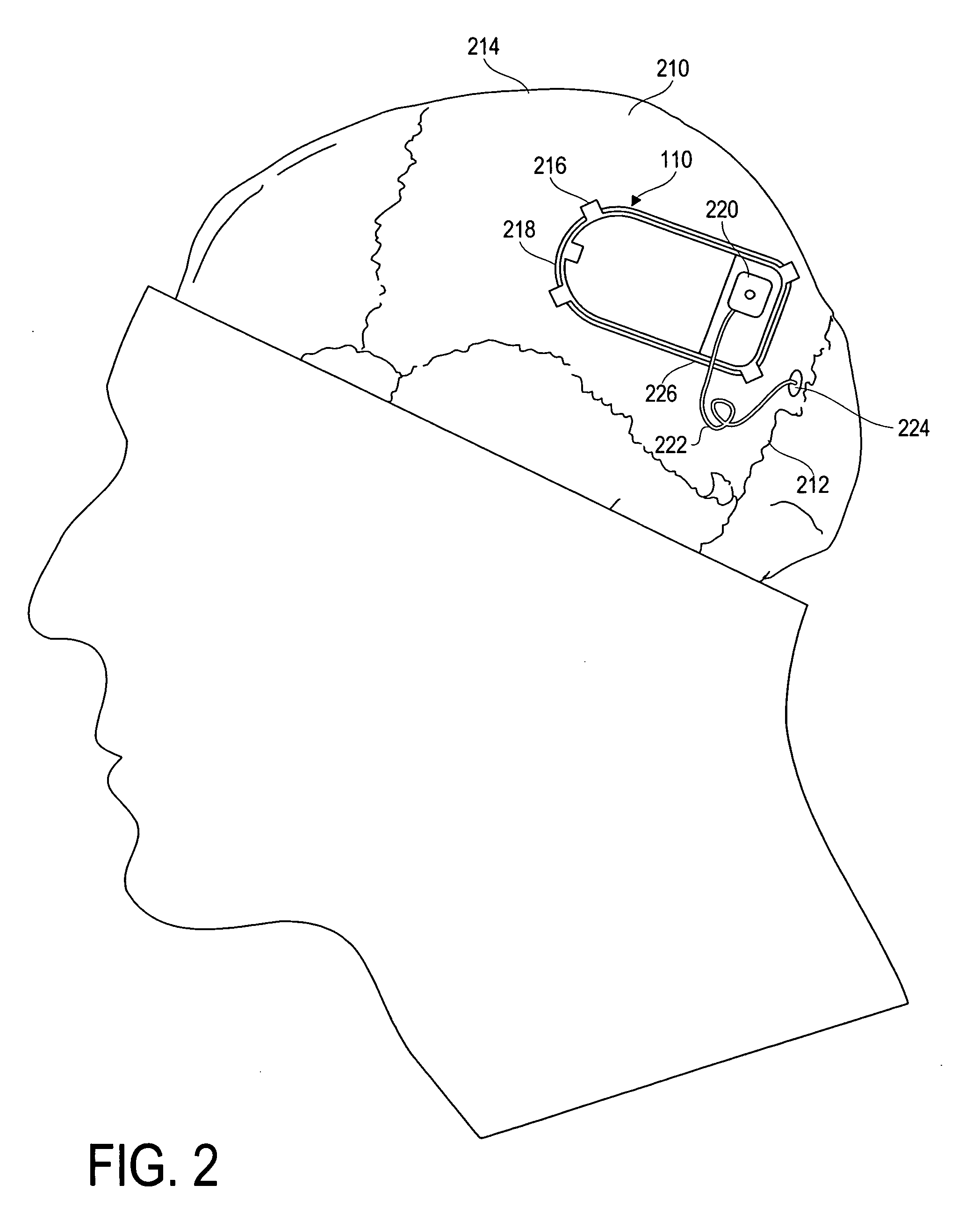Modulation and analysis of cerebral perfusion in epilepsy and other neurological disorders
a technology for cerebral perfusion and epilepsy, applied in the field of medical devices for treating neurological disorders, can solve the problems of deterioration of other brain functions (including cognitive function), physical impairment, and frequent limitation of sufferers, and achieve the effects of reducing perfusion, increasing perfusion, and saving power
- Summary
- Abstract
- Description
- Claims
- Application Information
AI Technical Summary
Benefits of technology
Problems solved by technology
Method used
Image
Examples
Embodiment Construction
[0050] The invention is described below, with reference to detailed illustrative embodiments. It will be apparent that a system according to the invention may be embodied in a wide variety of forms. Consequently, the specific structural and functional details disclosed herein are representative and do not limit the scope of the invention.
[0051]FIG. 1 depicts an intracranially implanted neurostimulator device 110 according to the invention, which in one embodiment is a small self-contained responsive neurostimulator located under the patient's scalp 112. As the term is used herein, a responsive neurostimulator is a device capable of detecting or anticipating neurological events such as ictal activity, and providing therapy to neural tissue in response to that activity, where the therapy is specifically intended to terminate the ictal activity, treat a neurological event, prevent an unwanted neurological event from occurring, or lessen the severity, frequency, or likelihood of certai...
PUM
 Login to View More
Login to View More Abstract
Description
Claims
Application Information
 Login to View More
Login to View More - R&D
- Intellectual Property
- Life Sciences
- Materials
- Tech Scout
- Unparalleled Data Quality
- Higher Quality Content
- 60% Fewer Hallucinations
Browse by: Latest US Patents, China's latest patents, Technical Efficacy Thesaurus, Application Domain, Technology Topic, Popular Technical Reports.
© 2025 PatSnap. All rights reserved.Legal|Privacy policy|Modern Slavery Act Transparency Statement|Sitemap|About US| Contact US: help@patsnap.com



